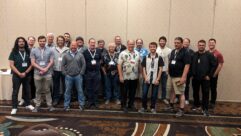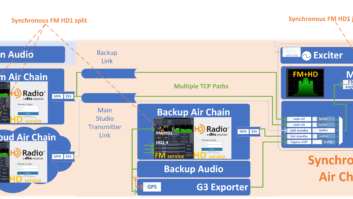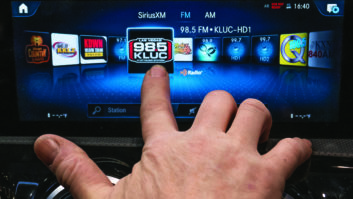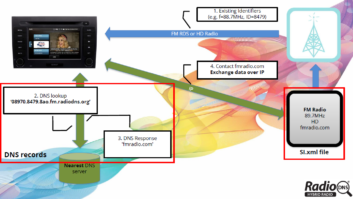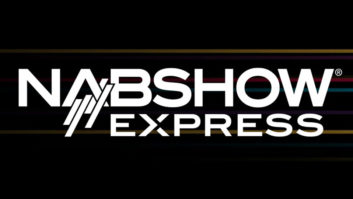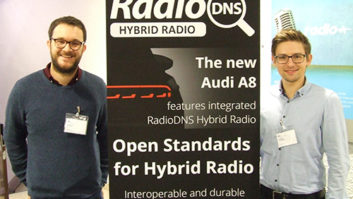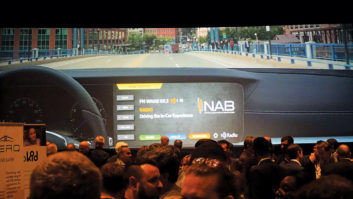Nick Piggott is the project director for UK-based hybrid radio organization RadioDNS.�
�
�
Q: RadioDNS has been around for a while now, and you recently had your 10th General Assembly. Can you give us a brief status report of notable recent news or developments.
A:Our main objective for 2015, continuing into 2016, is Project Logo, which establishes widespread availability of meta-data from radio stations, which in turns enables the automotive industry to design much better user interfaces for broadcast radio. We’re also developing a platform for manufacturers to be able to test and certify that their devices are working as expected, and we’re planning some extensions to the technology standards in response to feedback from the community.
�
Q: The organization says its efforts are paying off with growth. How do you measure that; and can you give some examples.
A:RadioDNS monitors two growth curves � how many broadcasters are using our standards, and how many devices are supporting RadioDNS. The number of broadcasters supporting RadioDNS, particularly in Europe, is growing strongly as a result of broadcaster organisations working together to deliver hybrid for all their members. As an example, RadioPlayer offers RadioDNS support to all the radio stations using their platform, which brings hundreds of stations to the market at each launch. It’s a steady, determined growth curve, which we publish athttps://radiodns.org/get-involved/project-logo/project-logo-rollout/.The device growth curve is differently shaped. We’re aware from the questions we receive that manufacturers are implementing RadioDNS, so the long period of apparent inactivity reflects their long gestation periods, particularly in automotive. When devices hit the market, it’ll grow quickly and to large numbers. We estimated that as a result of Samsung including RadioDNS in some of their handsets 2 years ago, there are probably about 21m RadioDNS enabled smartphones with FM in Europe.
�
Q:The steering board recently named you as a part-time project director. Why did it take that step?
A:As is the case with most not-for-profit organisations, financial caution with our members’ money is high of our list of priorities. We’ve managed tremendous growth on 5 years of quasi-voluntary management effort, but the board decided that the timing was right this year to invest more to get more focus on accelerating growth.
�
Q: What new hybrid radio features are part of the RadioDNS standards?
A:We’ll be making some updates to the standards this year to address some specific concerns of the value of meta-data to broadcasters, and the growing demands of automotive to create even better radio experiences. We’ve already got a very rich toolkit of technology standards, so often we’re helping people use the right tool from the box, rather than create a new one.
�
Q: We often hear NextRadio being described as a hybrid radio platform too. Does RadioDNS �play� with NextRadio; what�s your stance in regards to one another?
A:NextRadio has addressed the specific desire of the US radio industry to get FM enabled in smartphones, and has had to do that within the fairly unique context of the US market, and with a proprietary technology stack and profit-focused business plan. RadioDNS is a set of open technology standards, so as with any organisation, NextRadio are free to integrate those into what they do. RadioDNS puts interoperability at the heart of our approach, meaning no broadcaster, manufacturer or service provider is locked in for life, and there’s no centralized control of the system.
�
Q:What lessons has RadioDNS learned that the U.S. radio industry should take note of, regarding metadata or the general concept of hybrid radio?
A:Metadata is essential to modernizing broadcast radio. Most radio stations have plenty of meta-data, but aren’t good at distributing it alongside the audio signal, which leaves broadcast looking flat alongside other media experiences. As an example, almost every radio station knows exactly what song they’re playing at any time, but many listeners are still reaching for Shazam to find out what it is, which is giving Shazam far more insight into what a station’s listeners are doing than the radio station itself.�
�
Q: Any other important message you�ll be bringing to the NAB Show in April?
A:RadioDNS can add tremendous value to existing broadcast radio, and do it without the risk of getting locked out of a proprietary platform, but manufacturers won’t implement it without seeing support from radio stations. We’re willing to help, but stations need to make the decision to get involved.
�



